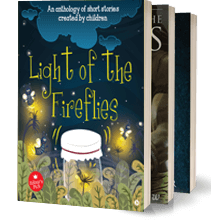
- Discover books
- For Writers
-
For Writers
-
Indie Author Championship
-
Challenges
Writing Contests
- Get Started

"It was a wonderful experience interacting with you and appreciate the way you have planned and executed the whole publication process within the agreed timelines.”
Subrat SaurabhAuthor of Kuch Woh Pal -
Crop your profile image

ANIMAL TALES
Books by Dr. C. D. Verma
This world is replete with various species of creatures: human beings, animals, birds, reptiles, amphibians. And all have been living together from ancient times. Therefore, many maxims and phrases, have cropped up appertaining animals and birds: such as from the horse’s mouth, dog in the manger policy, swan song, birds of a feather flock together and so on. And many animal tales and stories, have fascinated us over the centuries. For the ro
This world is replete with various species of creatures: human beings, animals, birds, reptiles, amphibians. And all have been living together from ancient times. Therefore, many maxims and phrases, have cropped up appertaining animals and birds: such as from the horse’s mouth, dog in the manger policy, swan song, birds of a feather flock together and so on. And many animal tales and stories, have fascinated us over the centuries. For the root of the word “animal” is “animate,” which means one who breathes life. By natural corollary, it means creatures pulsating with life, be they human beings, or animals or birds. Man has the language to speak. But an animal’s eyes have the power to speak a great language. Most of the animal stories, secular and spiritual, included in this book, have a distinct lingua franca, to impel us to understand the emotions of animals and birds in a given situation. And some of the animal stories are based on real incidents, observed minutely. And others have been culled from the holy scriptures, especially the Ramayana. So, one can say that the present book is a collection of secular- qua temporal - and spiritual stories appertaining animals and birds.
ANIMAL TALES
Books by Dr. C. D. Verma
This world is replete with various species of creatures: human beings, animals, birds, reptiles, amphibians. And all have been living together from ancient times. Therefore, many maxims and phrases, have cropped up appertaining animals and birds: such as from the horse’s mouth, dog in the manger policy, swan song, birds of a feather flock together and so on. And many animal tales and stories, have fascinated us over the centuries. For the ro
This world is replete with various species of creatures: human beings, animals, birds, reptiles, amphibians. And all have been living together from ancient times. Therefore, many maxims and phrases, have cropped up appertaining animals and birds: such as from the horse’s mouth, dog in the manger policy, swan song, birds of a feather flock together and so on. And many animal tales and stories, have fascinated us over the centuries. For the root of the word “animal” is “animate,” which means one who breathes life. By natural corollary, it means creatures pulsating with life, be they human beings, or animals or birds. Man has the language to speak. But an animal’s eyes have the power to speak a great language. Most of the animal stories, secular and spiritual, included in this book, have a distinct lingua franca, to impel us to understand the emotions of animals and birds in a given situation. And some of the animal stories are based on real incidents, observed minutely. And others have been culled from the holy scriptures, especially the Ramayana. So, one can say that the present book is a collection of secular- qua temporal - and spiritual stories appertaining animals and birds.
Create the Life You Want
Books by Dr. Seema Sharma
In "Create the Life You Want," you'll discover powerful secrets to living a fulfilling and joyful life. Each chapter explores different aspects of harnessing the universe's energy to shape your reality. From understanding the language of the universe to the power of your thoughts and feelings, this book guides you through techniques like gratitude, visualization, meditation, and the healing prayer of Ho'oponopono.
You'll learn, embrace challenges as si
In "Create the Life You Want," you'll discover powerful secrets to living a fulfilling and joyful life. Each chapter explores different aspects of harnessing the universe's energy to shape your reality. From understanding the language of the universe to the power of your thoughts and feelings, this book guides you through techniques like gratitude, visualization, meditation, and the healing prayer of Ho'oponopono.
You'll learn, embrace challenges as signs of growth, and love your failures as gateways to success. Through deliberate creation and minimalistic living, you'll unlock the secrets of the universe and find harmony within yourself.
Whether you're seeking to manifest your dreams or deepen your connection to the world around you, "Create the Life You Want" offers practical wisdom to transform your life from within. Change your inner world to change the outer world around you.
LOOM OF WISDOM
Books by Dr. C.D. Verma
A parable is a short story that illustrates a moral attitude, or a religious principle. Stories, by and large, fall into three categories: Temporal, spiritual and psychological. Secular stories, or tales, embody secular (temporal) literature, while the spiritual literature encompasses socio-religious and didactic tales. And then there are psychological stories. The Hindi equivalent of literature is sahitya. Sahitya is of two types: Swanta sukhaiy,
A parable is a short story that illustrates a moral attitude, or a religious principle. Stories, by and large, fall into three categories: Temporal, spiritual and psychological. Secular stories, or tales, embody secular (temporal) literature, while the spiritual literature encompasses socio-religious and didactic tales. And then there are psychological stories. The Hindi equivalent of literature is sahitya. Sahitya is of two types: Swanta sukhaiy, and Parjan Hitaiy. Swanta sukhaiy is the sahitya, qua literature, that is produced for self-delight, self- pleasure and self- satisfaction, while parjan hitaiy sahitya has wider connotations; it affects the manners and morals, and is prone to bring about a salubrious transformation in human conduct and idiosyncrasies. Parables, that is the didactic literature, falls in this category. Therefore, efforts have been made to Include parables, and other didactic stories, in this book: they will, willy-nilly, refine the sensibilities of the people at large.
RECALLING EPIC TALES from Ramayana and Mahabharata
Books by Dr. C. D. Verma
The knowledge, the wisdom, the manners and morals, depicted in the epic tales, are our valued inheritance. Happily, this brilliant and mellifluous legacy, embedded in the Ramayana and the Mahabharata, has been reinvented and retold in the present collection of epic tales. An attempt has been made in this book to retrieve the hoary past, qua the ancient tales, unknown or less known, with a view to making them known to the common citizens. The tales
The knowledge, the wisdom, the manners and morals, depicted in the epic tales, are our valued inheritance. Happily, this brilliant and mellifluous legacy, embedded in the Ramayana and the Mahabharata, has been reinvented and retold in the present collection of epic tales. An attempt has been made in this book to retrieve the hoary past, qua the ancient tales, unknown or less known, with a view to making them known to the common citizens. The tales as implied in the title of the book “Recalling the Epic Tales,” are both spiritual and religious. Verily, they may be remote in time, but they are not remote in thought.
Story Time: The Puranic Wisdom
Books by Dr. C. D. Verma
Do you know that there was a “three-legged” seer, named rishi Bhringi? Perhaps you do not know. To make you “know” the “unknown,” or “lesser known,” is the sine qua non, nay the aim, of the book entitled "Story Time: The Puranic Wisdom." For the stories, myths, legends, tales, included in this volume, have been dug out from the holy scriptures and renowned classics. One of the characteristic beauties of the puran
Do you know that there was a “three-legged” seer, named rishi Bhringi? Perhaps you do not know. To make you “know” the “unknown,” or “lesser known,” is the sine qua non, nay the aim, of the book entitled "Story Time: The Puranic Wisdom." For the stories, myths, legends, tales, included in this volume, have been dug out from the holy scriptures and renowned classics. One of the characteristic beauties of the puranic and the classical literature is the happy amalgamation of nature and imagination. It is common to entertain children with stories in which birds and beasts are made to speak. But the stories of the Puranas and the epics are meant for elderly people. The usual expedient device employed is that these creatures in the previous birth, were human beings. For instance, a deer was a rishi in the previous birth, or a fox a king; the subsequent degradation being due to a curse. Each story teaches us something about life.
A Hand book of Psychology
Books by Harshita Sharma
While studying for my class 12th board exam this year, I asked myself how can I express my understanding of the concepts I studied. The answer was, to make notes in such a way, that I could have a quick look on them any time and recall all that I had learned. So, to make comprehensible, precise and retentive revision notes was a big challenge for me. Here comes the catch! When I got succeeded in making exactly what I wanted, I thought why not share them with o
While studying for my class 12th board exam this year, I asked myself how can I express my understanding of the concepts I studied. The answer was, to make notes in such a way, that I could have a quick look on them any time and recall all that I had learned. So, to make comprehensible, precise and retentive revision notes was a big challenge for me. Here comes the catch! When I got succeeded in making exactly what I wanted, I thought why not share them with other students who find themselves in the same tricky situation. So, I modified my notes, which could be studied and understood, even by a layman person.
Since the syllabus and the pattern got changed suddenly and we were left with less time in the commencement of Term-2 board examinations, I tried to incorporate different methods like notes, acronyms, mnemonics, keywords, flowcharts, mind maps and tables for an easy understanding of myself.
I am sure this handbook of Psychology, which is a quick guide to many like me, will help other students to prepare well for their board exams.
Harshita Sharma
Renowned Sages of Ancient India
Books by Dr. C. D. Verma | Dr. Manjula Batra | Dr. Seema Sharma
The common populace in the Vedic and post-Vedic era, lived in SPIRITUAL INDIA. They relished the company and the companionship of the seers, and felt blessed. The sages had their hermitages, close to the populated areas, a little distance away in the deep woods, or on the mountains, near the rivers, or rivulets, or lakes. The worldly needs of the common people were too few, just meagre in the form of food, shelter and clothing. They lived a
The common populace in the Vedic and post-Vedic era, lived in SPIRITUAL INDIA. They relished the company and the companionship of the seers, and felt blessed. The sages had their hermitages, close to the populated areas, a little distance away in the deep woods, or on the mountains, near the rivers, or rivulets, or lakes. The worldly needs of the common people were too few, just meagre in the form of food, shelter and clothing. They lived a simple life in the lap of nature, enjoying the nature’s plenty. They were happy with this kind of simple and ordinary life sans any opulence. But down the millennium, things have undergone a complete metamorphosis. Spiritual India has taken a down-turn, and become Secular India. The common people, by and large, have become oblivious of their past heritage qua the sages from whom their genealogy, their lineage, emanated. People have become more materialistic, and less spiritualistic. Yet a large chunk of populace continues to follow the religious and spiritual practices, reciting Gayatri mantra, the Hanuman Chalisa, holding gatherings and listening to religious stories and discourses culled from scriptures and holy books, and performing yajnas. In this book, an attempt has been made to retrieve the learned sages, and some important mythical legends, from the hoary past to bring them closer to the present generation.
Know The Seers of India
Books by Dr. C. D. Verma
KNOW THE SEERS OF INDIA provides a deep insight into the life and relevance of some of the most significant Rishis, who founded the Hindu community. There is no gainsaying the fact that the Hindus are Rishi Santan (progeny of sages). The seers, qua the sages, of ancient India are our ancestors, our forefathers. The lineage of each Hindu family goes back to one or the other Rishi. This fact stands substantiated by sub-castes and surnames, such as Bharadwaja, Ka
KNOW THE SEERS OF INDIA provides a deep insight into the life and relevance of some of the most significant Rishis, who founded the Hindu community. There is no gainsaying the fact that the Hindus are Rishi Santan (progeny of sages). The seers, qua the sages, of ancient India are our ancestors, our forefathers. The lineage of each Hindu family goes back to one or the other Rishi. This fact stands substantiated by sub-castes and surnames, such as Bharadwaja, Kashyap, Parashar, Vashisht, and so on. And so are the Gotras named after different Rishis. The sub-castes, as also Gotras, named after renowned Rishis, accentuate and endorse the dictum that the Hindus all over the globe are the descendants of the sages.
As a Rig Vedic term, Gotra simply means “cow pen,” or “herd pf cows.” The specific meaning being “family lineage kin” (as it were herd within an enclosure). No socio-religious ritual, or rite, such as marriage, child-birth, mundan, Shraddha rites, is complete without invoking the Gotra of the family. Verily, sub-castes and Gotras identify us with the past, with the Rishis of India. This book condenses information for all who are in search of their past, their roots, their identity.
The misfit
Today principal sir introduced a new teacher to the students and the staff in the morning assembly. Mrs. Komal Parashar was her name. She was totally opposite to her name, very ugly with small pits on her dark face, shapeless body and a rough voice. The whole assembly felt a great repulsion from her Read More...

Are you sure you want to close this?
You might lose all unsaved changes.
Select from one of our global stores to continue
 India
India
 Malaysia
Malaysia
 Singapore
Singapore
 UAE
UAE
Warning Message
The items in your Cart will be deleted, click ok to proceed.



















